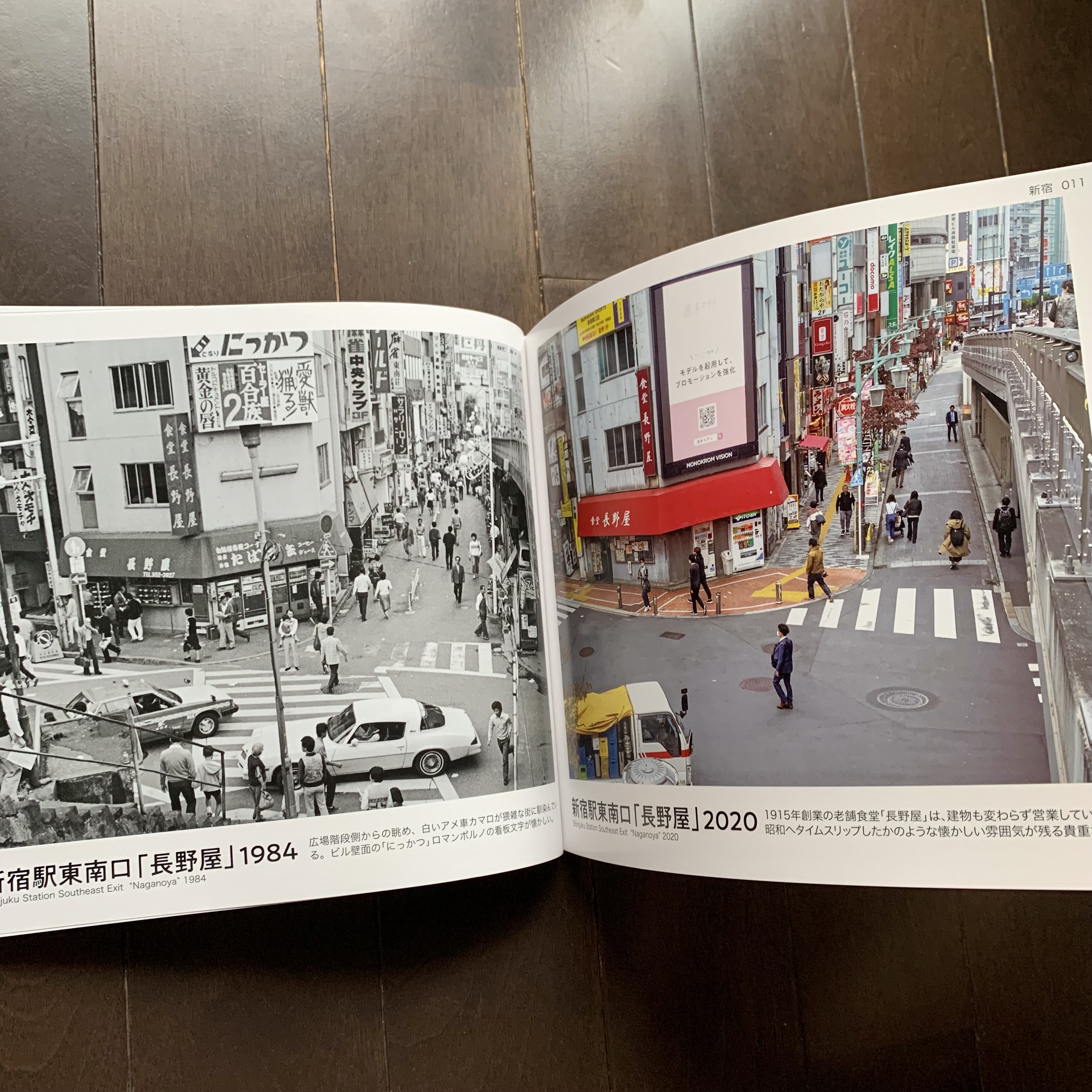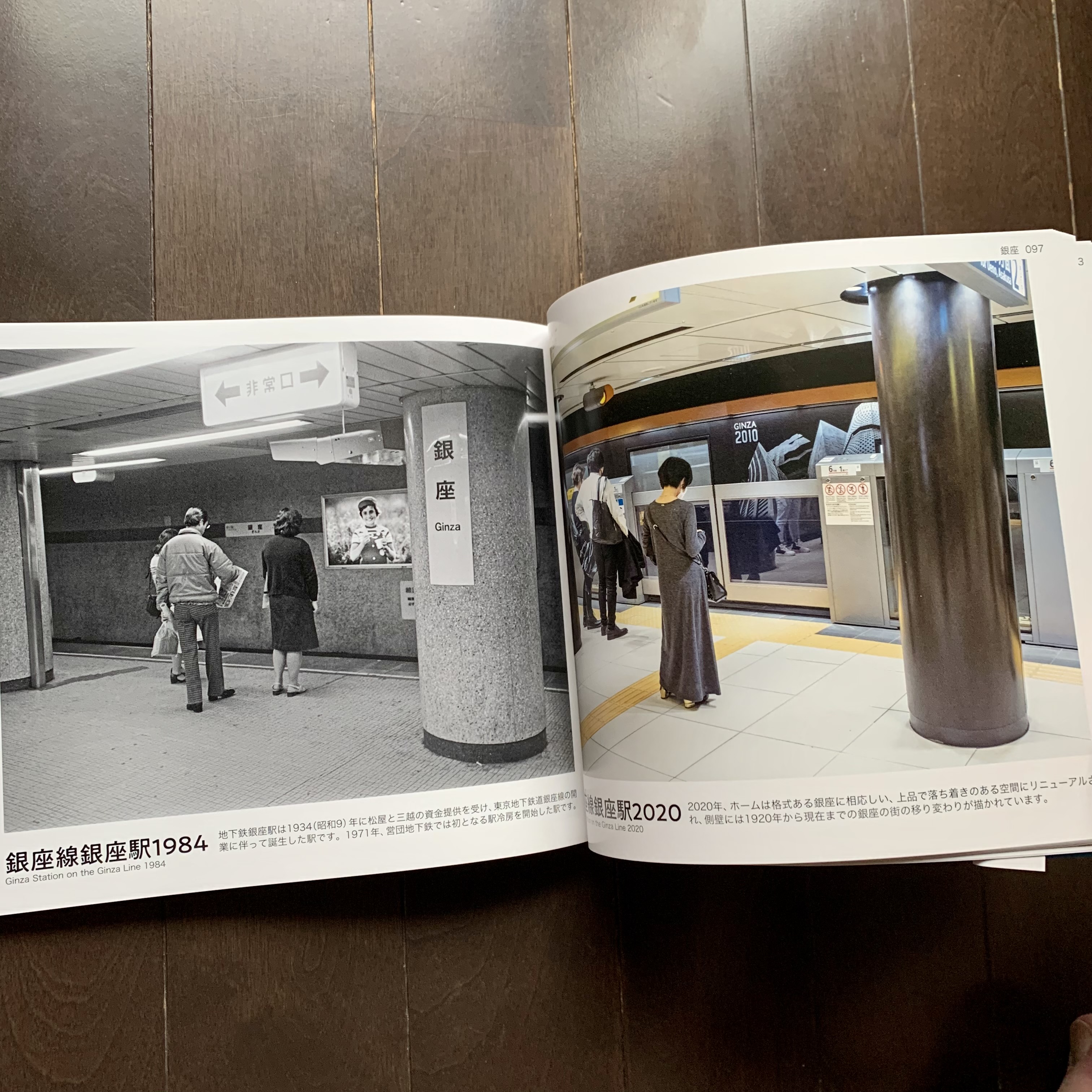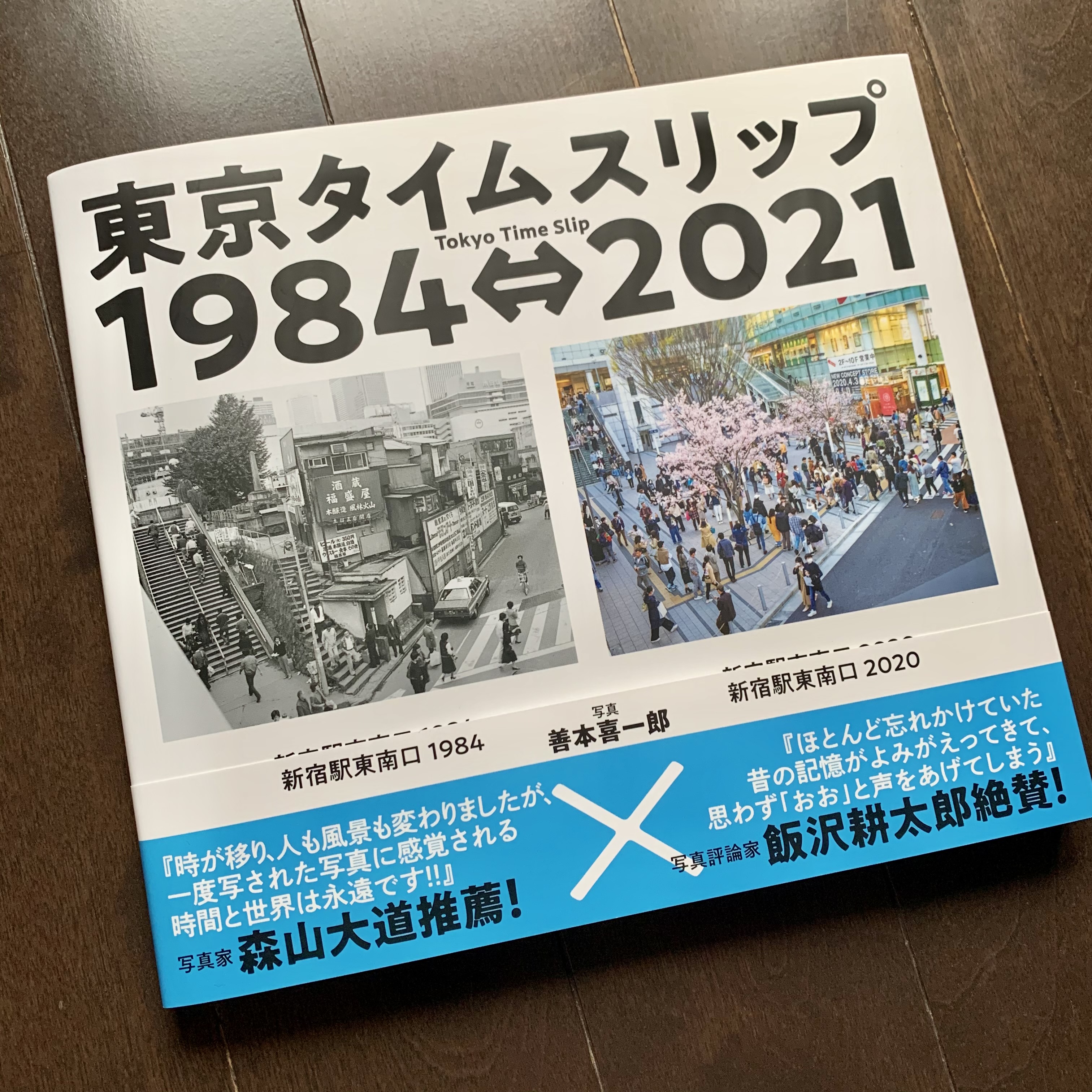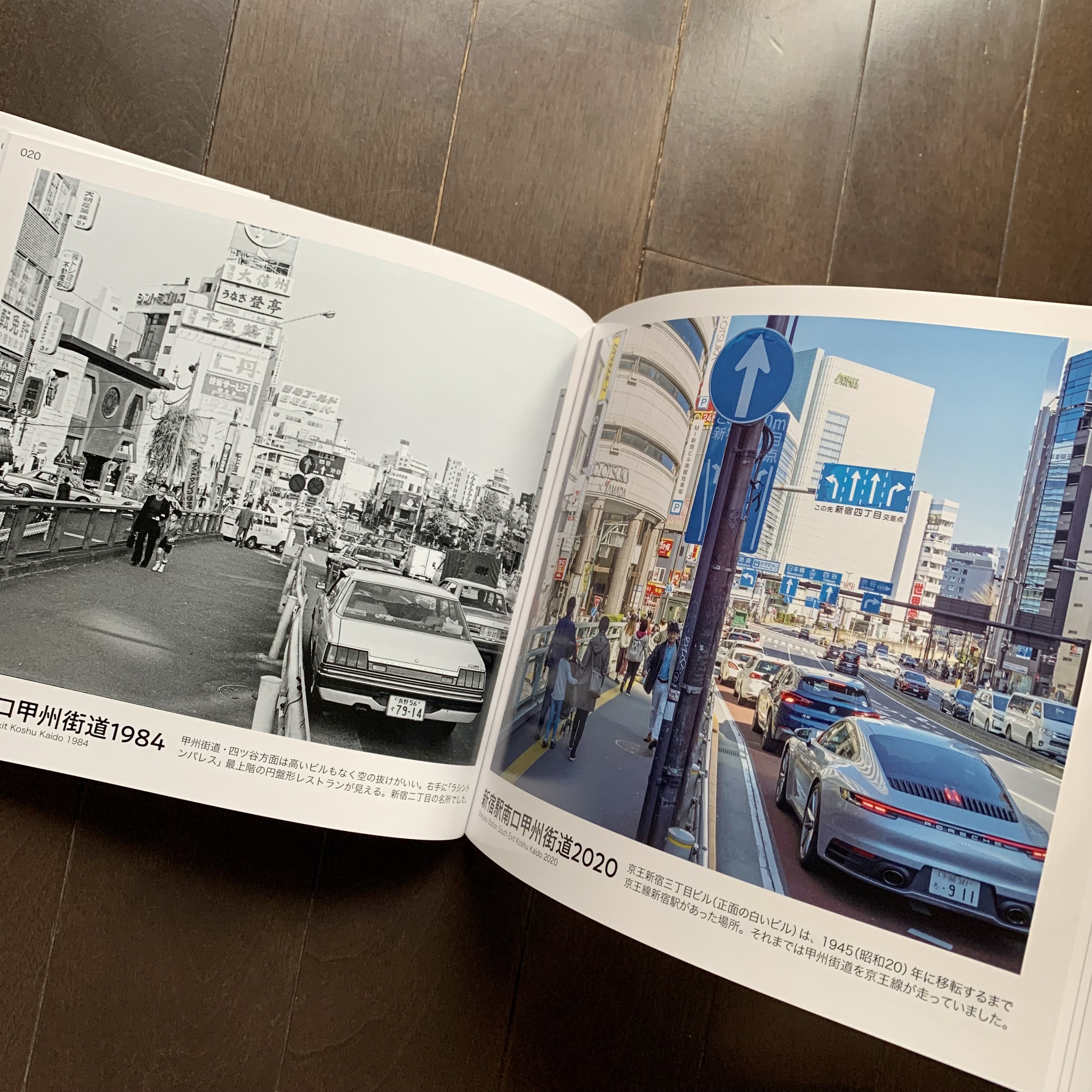コラム
落合憲弘
John Sypal
タカザワケンジ
なぎら健壱

“Tokyo Time Slip 1984 - 2020” by Kiichiro Yoshimoto.
This is a fascinating book of rephotography that records changes the city has experienced over the past thirty-six years. While a student in the early 1980s, Yoshimoto made an extensive photographic survey of Tokyo. His pictures from that time are remarkable in their steady sense of distance. Rather than a dramatic, poetic interpretation of life on the street they instead clearly describe its space and surfaces- surfaces which in turn offer a view of an era.
As a collection they are entirely competent, wonderfully descriptive pictures of Tokyo in 1984. This alone would make for a good photobook but, finding himself at home with his old negatives in 2020, Yoshimoto embarked upon a project to pair the past with the present.
The core concept is immediately understood by anyone who sees the cover- Yoshimoto re-visited and re-photographed the same street corners in 2020.
Printed on facing pages, the then/now spreads provide an opportunity to do something which only photography is capable of- to compare two truths at the same time. (That the Japanese are able to employ this ability throughout other aspects/facts of life is an essay for another day.)
Looking at the pages, one can marvel at large changes- there are far more glass cubes in Tokyo now than there were 36 years ago- or be intrigued at how over the years signs and light poles have been imperceptibly upgraded and moved over a meter. In these details Yoshimoto expresses one of Tokyo's great paradoxes: Despite continual change the city remains the "same".
Between the temporal back-and-forth inherent in the pairing of the 1984 / 2020 images lies another dimension- one which supports memories which viewers themselves have made in these places. The openness of Yoshimoto’s images allow plenty of room for individual recollections to bubble to the surface. It’s unlikely that anyone who has been to Tokyo won’t find a familiar view, and with it, a memory of a feeling, or time, or face connected to the places shown.
The book’s “hook” and accessibility have made it quite popular- a popularity which appeals to far more people than the usual crowd that buys photobooks. A best-seller on amazon and at Kinokuniya in Tokyo, Tokyo Time Slip is now in its fourth printing. Likewise, the book benefits from a clean layout, interesting captions, and an affordable 2000 yen price tag.
I highly recommend it to anyone interested in broadening their understanding- or memories- of Tokyo.


「タイムスリップ」のように、カメラはタイムマシーンである。
善本喜一郎のこの素敵な写真集は、1984年から2021年まで、東京の過去36年間の変化を記録した、再撮影の魅力的な本です。
善本さんは学生時代(1984年頃)、東京を徹底的に撮影していました。その写真は、決してドラマチックで詩的な捉え方ではなく、目の前を記録するように安定した距離感が感じられます。表面を明確に写し、その表面が時代観を支えています。 これだけでも立派な写真集になるのですが、2020年に自宅で古いネガをベースにして、善本さんの過去と現在を対にしたプロジェクトを始めました。

誰もがこの表紙を見れば、すぐにコンセプトを理解できるでしょう。善本さんは昔の写真をもとに2020年に同じ街角を再訪し、リーフォト(再撮影)しました。
本を開くと、それぞれのページに2枚(過去/今)の写真があります。写真にしかできないことですが、これで2つの「時代」を同時に比較できます。
そこには面白い発見がたくさんあります。36年前より、現在の東京にはガラスキューブ型の建物が増えていたり、新しくなった看板や電柱の距離が1メートルぐらい変わって立て直されたり、画面の細部に興味を引かれます。このようなさまざまな変化を見つけて、いい面も悪い面も、写真を通して東京の偉大なパラドックスのひとつを見ることができます。それは永遠に変化していきますが、「東京」という都市がなくなることはありません。

この1984年と2020年の対向ページには、「時代の違い」だけではなくて、読者の「想い」が漂っていると思います。写真を見ることで、その写っている場所で作った個人的な記憶を甦らせてくれます。そう、この本は善本さんの写真ですが、写っているのは皆の記憶の東京です。
東京に行ったことのある人ならば、見覚えのある風景を見つけ、そこに感情や時間、顔の記憶を見出すことができるのではないでしょうか。
「懐かしい!」、「面白い!」と思わせてくれるこの本は、通常の写真集よりもはるかに多くの人に支持されています。そして2,002円という手頃な価格で売上も良く、今は4刷目となっているそうです。すごいですね。東京への理解や記憶を深めたいと思っている方には、ぜひお勧めしたい1冊です。
善本喜一郎
『東京タイムスリップ1984⇔2021』
河出書房新社刊・2021年・2002円(税込)
https://www.kawade.co.jp/np/isbn/9784309291420/
 26 Duets? Duels? Near-overlaps of time and Space across Tokyo. 東京の時間と空間が重なり合う写真集ツアー
2025/04/04
26 Duets? Duels? Near-overlaps of time and Space across Tokyo. 東京の時間と空間が重なり合う写真集ツアー
2025/04/04
 25 Naoki Ishikawa "TOKYO The City Where I Was Born" 石川直樹『東京 ぼくの生まれた街』
2024/01/05
25 Naoki Ishikawa "TOKYO The City Where I Was Born" 石川直樹『東京 ぼくの生まれた街』
2024/01/05
 24 山内道雄 Michio Yamauchi『TOKYO UP CLOSE』
2023/10/20
24 山内道雄 Michio Yamauchi『TOKYO UP CLOSE』
2023/10/20


PCT Membersは、Photo & Culture, Tokyoのウェブ会員制度です。
ご登録いただくと、最新の記事更新情報・ニュースをメールマガジンでお届け、また会員限定の読者プレゼントなども実施します。
今後はさらにサービスの拡充をはかり、より魅力的でお得な内容をご提供していく予定です。
 「Photo & Culture, Tokyo」最新の更新情報や、ニュースなどをお届けメールマガジンのお届け
「Photo & Culture, Tokyo」最新の更新情報や、ニュースなどをお届けメールマガジンのお届け 書籍、写真グッズなど会員限定の読者プレゼントを実施会員限定プレゼント
書籍、写真グッズなど会員限定の読者プレゼントを実施会員限定プレゼント